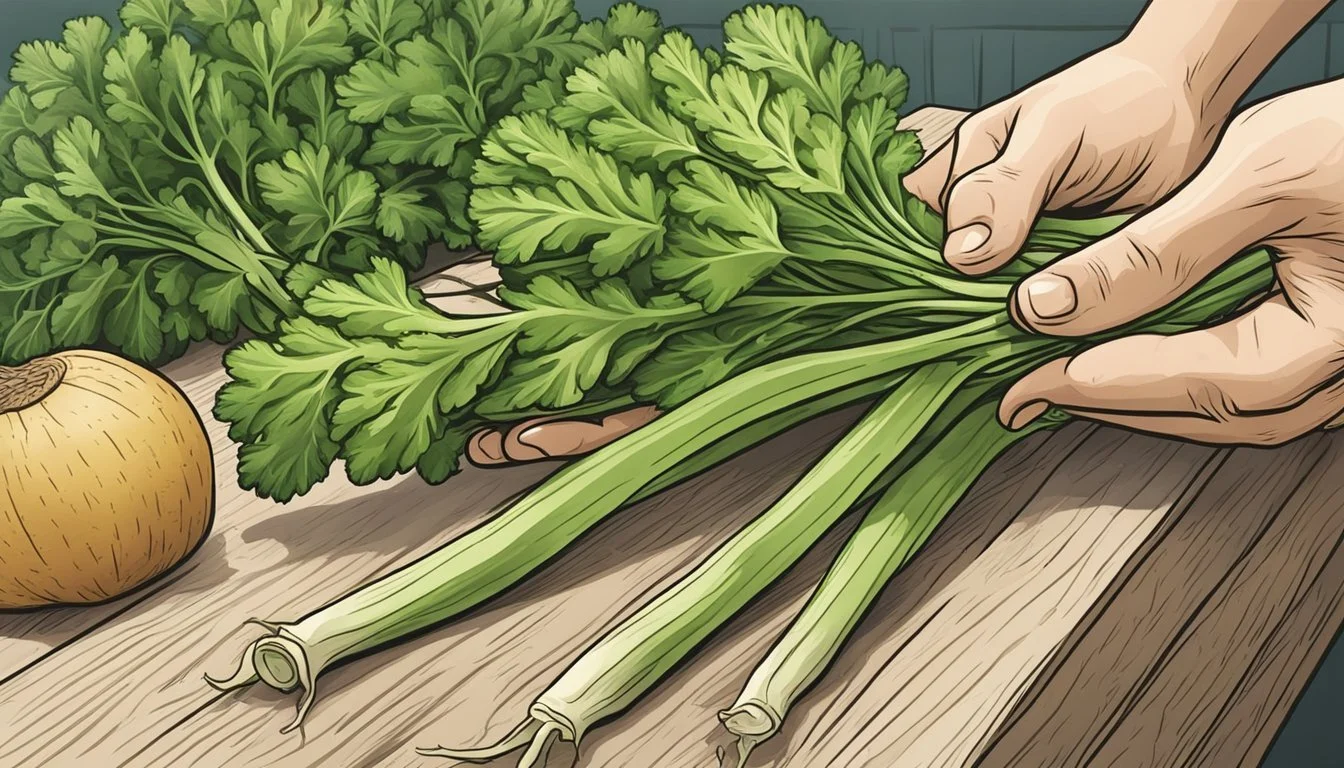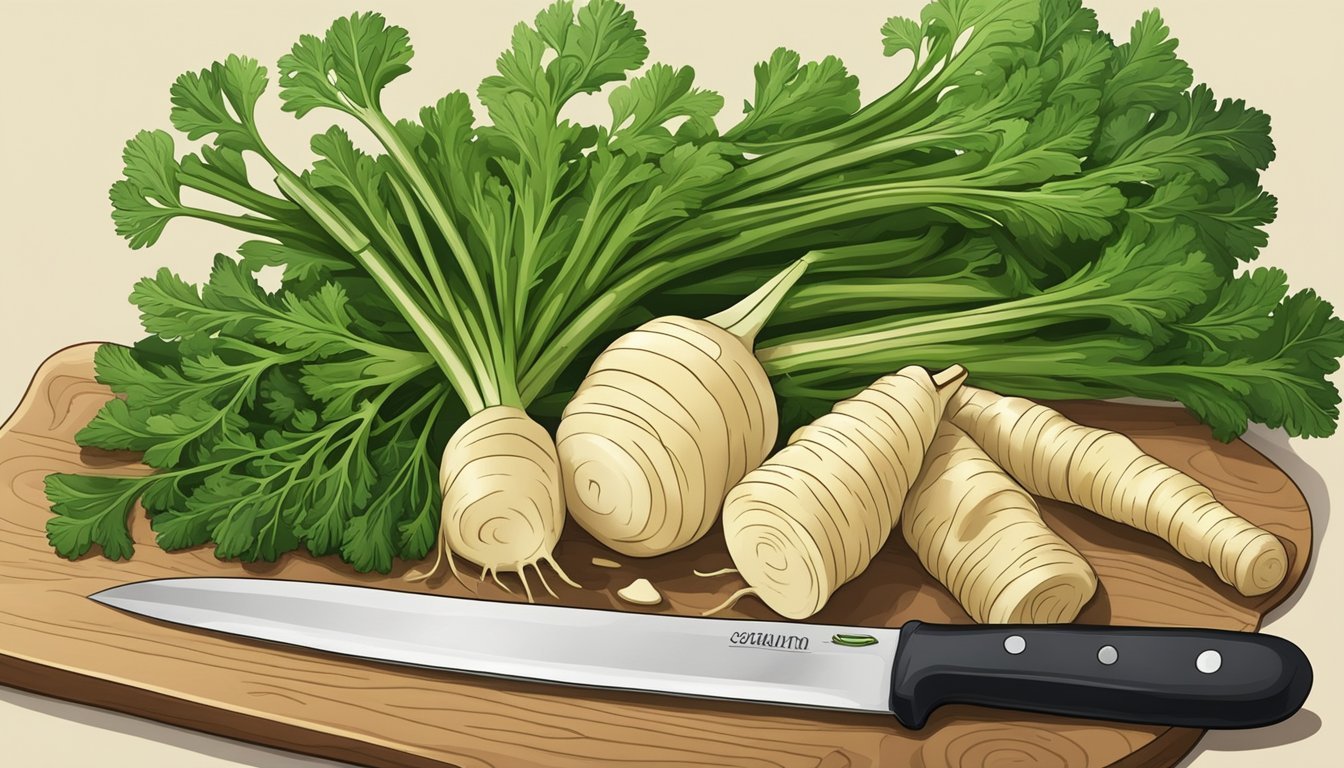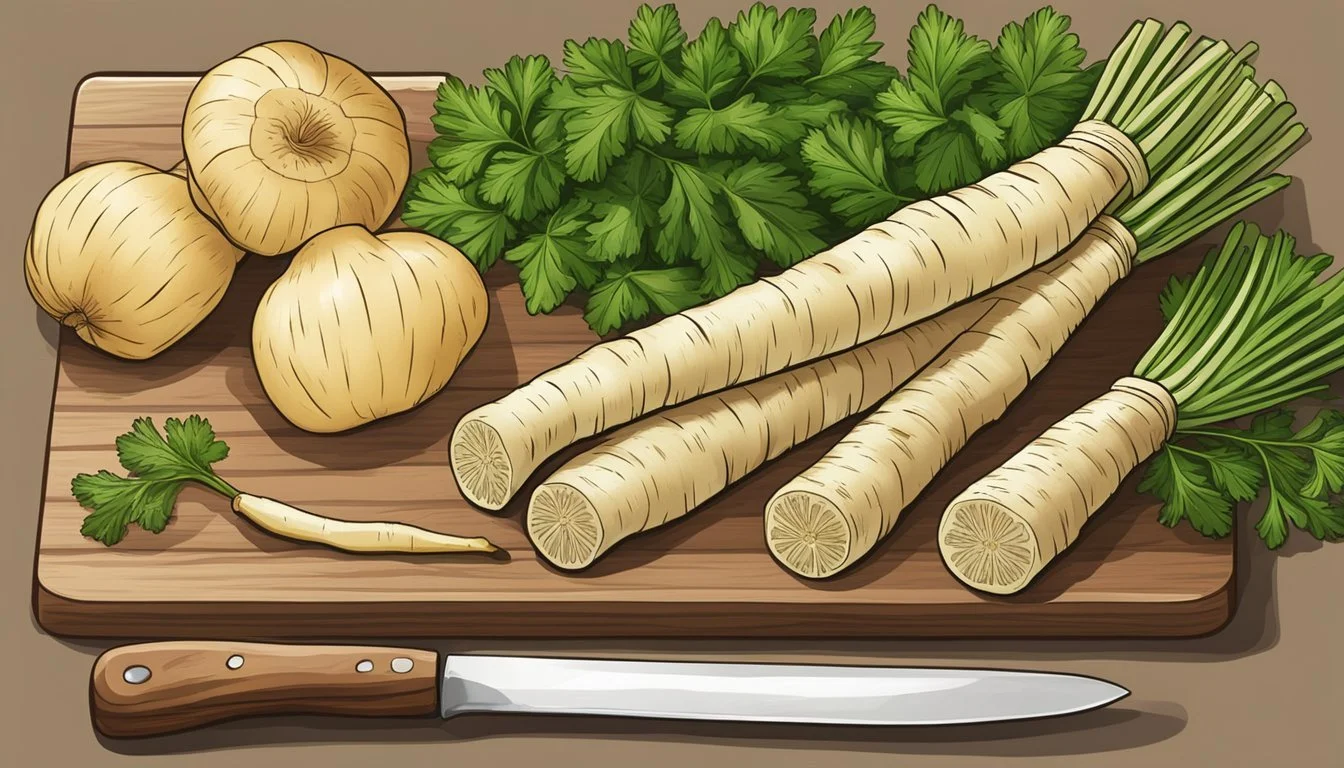How to Substitute Parsley Root for Parsnips
A Simple Guide
Substituting parsley root for parsnips is a practical solution in culinary situations where parsnips are either unavailable or undesired by the cook. Parsley root, though not as commonly used as its leafy green counterpart, the parsley herb, can bring a similar profile of sweet and earthy flavors with a hint of nuttiness that matches well with the taste characteristics of parsnips. Also, its texture allows for versatile culinary uses, making it an excellent parsnip substitute in a variety of dishes.
The physical resemblance of parsley root to parsnips is apparent; both are pale root vegetables and share a similar shape and size, which can make parsley root a seamless substitute in recipes. Given its flavor profile which echoes the balanced sweetness and earthiness of parsnips, cooks can use parsley root in equal measure to replace parsnips in most recipes. This includes soups, purees, stews, and even when roasted or mashed, providing a comparable result while maintaining the intended dish's integrity.
Understanding Parsley Root and Parsnips
Selecting the right ingredients for your recipe ensures both taste and nutrition are optimized. When substituting parsley root for parsnips, understanding their similarities and differences is essential.
Botanical Background
Parsnips (Pastinaca sativa) and parsley root (Petroselinum crispum var. tuberosum), often confused due to their similar appearance, are distinct root vegetables. Parsnips are related to carrots, while parsley root, also known as Hamburg parsley, is closely linked to leafy parsley.
Culinary Uses
While both vegetables are versatile, parsnips are commonly found in soups, mashes, and roasted dishes. Parsley root also fits into these categories but can add a unique twist with its combination of flavors and aromas often used in European cuisines.
Nutritional Comparison
Both vegetables provide valuable nutrients:
Parsley root: High in dietary fiber, vitamins C and K, iron, and potassium.
Parsnips: Rich in fiber, vitamin C, folate, and similar levels of potassium.
Taste and Texture Profile
Parsnips are known for their sweetness and nutty flavor, whereas parsley root offers a taste reminiscent of a blend between celery, turnip, and parsley with an earthy profile. Their textures are similar enough to substitute well in recipes.
Availability and Seasonality
Parsnips are a classic winter vegetable and have a somewhat broader availability, whereas parsley root may be more seasonal and less prevalent outside of Europe.
Cultural Significance
In European cultures, particularly in Eastern and Central Europe, parsley root plays a significant role in traditional dishes while parsnips are a staple in British and American cuisines.
Affordable Alternatives
Aside from parsley root, other parsnip substitutes include carrots, turnips, and salsify, each bringing a unique flavor to the dish they're used in.
Cooking Considerations
When cooking, both parsnips and parsley root can be prepared through boiling, roasting, or mashing. However, due to the subtle differences in flavor, the quantity and seasoning may need adjustment when substituting one for the other in recipes.
Selecting Parsnip Substitutes
When a recipe calls for parsnips and they are not available, selecting a suitable substitute involves considering visual similarities, flavor profiles, texture, and cooking times. These factors ensure that the replacement vegetable blends well with the other ingredients and maintains the dish's intended characteristics.
Visual Similarities
Parsnips are characterized by their creamy white color and tapering shape. Parsley root is visually the most similar to parsnips, with nearly identical form and color. White carrots also share this resemblance, thereby providing a close visual match in dishes. The size and shape of turnips and celeriac (celery root) may differ but can still suffice when aesthetics are less critical.
Flavor Profiles
In terms of flavor, parsnips have a distinctively earthy taste with a hint of sweetness. Parsley root mirrors this profile closely, offering a compatible substitute in flavor-sensitive dishes. For a sweeter option, sweet potatoes can be used, though the difference in taste should be considered. On the other hand, celeriac and salsify provide a milder, slightly nutty flavor, which can still complement the original purpose of the parsnip in a recipe.
Texture and Consistency
The ideal substitute should mimic the starchy, slightly fibrous texture of parsnips. When cooked, parsley root achieves a similar consistency, suitable for applications like purées or when making a base for soups and stews. Vegetables like turnips and white carrots also maintain a firmness when cooked which allows them to stand in for parsnips in most recipes. Orange carrots, while similar, may require slightly less cooking time as they tend to soften more quickly.
Cooking Times
When substituting for parsnips, it is important to consider the differences in cooking times to achieve the desired texture. Parsley root and parsnips can generally be interchanged with no adjustment in cooking duration. Carrots may need to be checked for doneness earlier due to their tendency to cook faster, while turnips and celeriac can require slightly longer to become tender, especially if they are larger in size. It's advisable to test these substitutes for readiness a few minutes before the parsnips would typically be done.
Application in Recipes
When substituting parsley root for parsnips in recipes, consider the slight variations in flavor and texture. Parsley root can be a bit more intense and possess an earthy, herbal note. Appropriate adjustments in cooking times and seasonings may enhance the overall taste to better suit the intended recipe.
Substituting in Soups and Stews
In soups and stews, parsley root can replace parsnips to add a distinctive flavor similar to celery with a hint of nuttiness. For every parsnip your recipe calls for, use an equal amount of parsley root. Bear in mind that parsley root may cook slightly faster; thus, checking for doneness a few minutes earlier is advisable.
Roasting and Baking
While roasting or baking, cut parsley root into similar-sized pieces as you would parsnips to ensure even cooking. They can add a robust flavor to roasted vegetable medleys. For a sweeter taste, roasting brings out the natural sugars of the parsley root, much like it does with parsnips.
Salads and Side Dishes
Parsley root can crisp up nicely in salads, providing an earthy contrast to other ingredients. Grated or finely chopped, it's an excellent way to infuse a parsnip-like sweetness and crunch into cold side dishes. Keep in mind that the strong flavor of parsley root works best with robust dressing and flavors.
Purees and Mashes
Parsley root purees or mashes can offer a zesty alternative to the creamy sweetness of parsnip-based side dishes. They pair well with herbs and butter, adding richness and depth. Expect a less sweet and more savory profile, ideal for balancing out hearty main courses.
Adjusting Seasonings and Spices
The innate zest of parsley root might necessitate a decrease in herbal spices to avoid overpowering the dish. Conversely, its hearty flavor could benefit from a pinch more sweetness or a tad more salt to align with parsnips' naturally sweet taste profile. Season to taste, keeping the base flavor of parsley root in mind.
Health and Nutrition
When replacing parsnips with parsley root, one should consider their health benefits and nutritional content to understand how they fit into a balanced diet.
Dietary Benefits
Parsley root and parsnips are both nutritious vegetables contributing beneficial fiber to the diet. Parsnips offer 5 grams of fiber per 100-gram serving, aiding in digestion and cardiovascular health. Parsley root, while not documented in the search results for exact fiber content, is similarly fibrous and supports a healthy digestive system.
Caloric Content
Regarding caloric value, parsnips and parsley root are both low in calories, making them a fitting choice for calorie-conscious diets. Specifically, parsnips contain slightly more calories due to their higher carbohydrate content.
Vitamins and Minerals
Parsnips are a good source of several vitamins and minerals, including:
Vitamin C
Vitamin E
Vitamin K
B vitamins (such as folate)
Potassium
Magnesium
Parsley root likewise contains vitamins and minerals essential for maintaining good health, although it possesses a different nutritional profile with varied concentrations of these nutrients.
Incorporating into a Balanced Diet
Both parsley root and parsnips can be efficiently integrated into a balanced diet. They are versatile and can contribute to the overall nutritional quality of meals. It is important to note that while both may be similar, they do have their distinct flavors and may not be identical substitutes in every recipe.
Shopping and Storage Tips
When substituting parsley root for parsnips, selecting fresh vegetables and storing them correctly is crucial to preserve their flavor and texture.
Selecting Quality Vegetables
One should look for parsley root and parsnips that are firm to the touch and free of blemishes or soft spots. The color should be a consistent creamy white, and smaller roots often have a more delicate flavor. Avoid any vegetable that appears shriveled or has started to sprout, as these are signs of age.
Storing for Freshness
Proper storage is essential to maintain the freshness of parsley root and parsnips. Here are optimal conditions for storage:
Temperature: Store these vegetables in a cool, dark place if not used immediately.
Humidity: Keep in a crisper drawer of the refrigerator for up to two weeks.
Packaging: Wrap loosely in a plastic bag with holes or paper bag to allow for air circulation.
Preparation Before Cooking
Before using parsley root or parsnips in cooking, one must prepare them properly:
Cleaning: Rinse thoroughly under cool running water to remove any dirt.
Peeling: Peel the skin using a vegetable peeler to reveal the tender flesh.
Cutting: Chop into consistent sizes for even cooking, as required by your recipe.
Conclusion
When substituting parsley root for parsnip, cooks have various options at their disposal. Parsley root, being similar in appearance and texture to parsnip, allows for seamless integration into recipes initially calling for parsnip. Its slightly sweeter taste and milder flavor means adjustments may be necessary to achieve the desired balance in dishes.
Taste and Texture: Parsley root can mimic the starchy texture of parsnip. Yet, it is important to note its sweeter profile which could affect the overall flavor of a dish.
Preparation Methods: Just like parsnips, parsley root can be prepared in multiple ways: baked, roasted, or fried. They maintain their form well and can add a delightful crunchiness to salads when used raw.
Culinary Uses: Parsley root works as a great alternative in purees, mashed dishes, or soups. Chefs should consider the root's flavor complements when selecting it as a stand-in for parsnip to ensure harmony in the final dish.
Parsnip Parsley Root Cream-colored Pale, slender Earthy, distinct flavor Sweeter, milder flavor Hearty stews, roasts Soups, purees, salads
In summary, parsley root presents a viable substitute for parsnip in various culinary contexts. Chefs can experiment with this root vegetable in their recipes, keeping in mind its characteristics to preserve the integrity of their dishes.






